I've seen Marianne Faithfull playing the Rudolstadt festival in 2005,[31] showcasing the songs of her "Before the Poison" album.[30] That was neither the end of her story nor the end of her illustrious career. But let us start at the beginning. In fact, her life has been quite interesting since her early childhood, and who can say that of him- or herself.
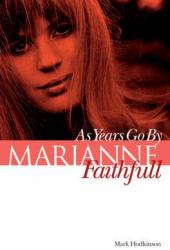
Marianne had been born in 1946 to Eva Sacher-Masoch of the infamous aristocratic Austrian family and English academic Glynn Faithfull. She grew up in Reading (halfway between London and Oxford) in a sort of bohemian household. After completing convent school, Marianne was plunging into London's Swinging Sixties when a tiny percentage really did live life to the brim.
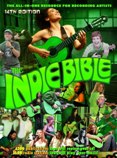 The Indie Bible is aimed to help independent artists of all styles of music
gaining exposure through airplay,
reviews and distribution, and finding gigs at venues and festivals.
The music directory lists magazines and music blogs, radio stations, labels and distributors,
promotion, marketing, management, PR and publicity services, and eventually websites where you
can upload mp3s or videos. It also includes insightful articles written by industry experts
covering all of the main areas of music promotion and playing live
(how to submit music for review, get radio airplay, copyright music, create a press kit,
take advantage of social media, etc.).
Editor David Wimble is offering The Ultimate Indie Bundle at a discount price, featuring
The Indie Bible e-book, Indie Bible Online (for both the US and abroad) and
The Indie Venue Bible (a set of venue directories for the US and Canada).
Customers also receive the forthcoming Indie Bible when it is released in mid December.
The Indie Bible is aimed to help independent artists of all styles of music
gaining exposure through airplay,
reviews and distribution, and finding gigs at venues and festivals.
The music directory lists magazines and music blogs, radio stations, labels and distributors,
promotion, marketing, management, PR and publicity services, and eventually websites where you
can upload mp3s or videos. It also includes insightful articles written by industry experts
covering all of the main areas of music promotion and playing live
(how to submit music for review, get radio airplay, copyright music, create a press kit,
take advantage of social media, etc.).
Editor David Wimble is offering The Ultimate Indie Bundle at a discount price, featuring
The Indie Bible e-book, Indie Bible Online (for both the US and abroad) and
The Indie Venue Bible (a set of venue directories for the US and Canada).
Customers also receive the forthcoming Indie Bible when it is released in mid December.
The Ultimate Indie Bundle. 2013, US-$ 59.95
(www.indiebible.com).
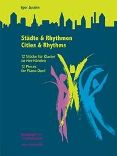 Odessa born and German based pianist Igor Jussim musically explores several cities
with original tunes, showcasing typical styles and rhythms arranged for two piano players.
It starts with the Czech small town Týnec nad Labem, where according to legend the polka
had been invented in 1830. The journey continues to
Vienna (waltz), Paris (valse musette), Napoli (tarantella), Andalusian Granada (canto gitano
and flamenco), Rio de Janeiro (bossa nova), Buenos Aires (milonga), Havanna (rumba trista),
St. Louis (ragtime, one of the predecessors of jazz),
and the Ukrainian Odessa (klesmer music, here a mix of bulgar and freylekh).
Featured are not only cities but also landscapes and countries such as
the Upper Palatine in Germany (zwiefacher)
and Greece (chasaposervikos, a model for Anthony Quinn's fictional sirtaki dance).
It's a lovely city trip around Europe and America,
and you can cover the distance within a few hours.
Odessa born and German based pianist Igor Jussim musically explores several cities
with original tunes, showcasing typical styles and rhythms arranged for two piano players.
It starts with the Czech small town Týnec nad Labem, where according to legend the polka
had been invented in 1830. The journey continues to
Vienna (waltz), Paris (valse musette), Napoli (tarantella), Andalusian Granada (canto gitano
and flamenco), Rio de Janeiro (bossa nova), Buenos Aires (milonga), Havanna (rumba trista),
St. Louis (ragtime, one of the predecessors of jazz),
and the Ukrainian Odessa (klesmer music, here a mix of bulgar and freylekh).
Featured are not only cities but also landscapes and countries such as
the Upper Palatine in Germany (zwiefacher)
and Greece (chasaposervikos, a model for Anthony Quinn's fictional sirtaki dance).
It's a lovely city trip around Europe and America,
and you can cover the distance within a few hours.
Igor Jussim, Cities & Rhythms - 12 Pieces for Piano Duet.
Edition Breitkopf 8835,
2012, ISMN 979-0-004-18399-1, pp80 €19,80.
 The connection between playing jazz and writing crime fiction is a strong one for me,
says jazz drummer Bill Moody.
A jazz musician begins with the framework or the song — the chords, the structure, the form —
but during a solo, he doesn't know what he's going to play or how until he reaches that part of
the song. Writing crime fiction for me is a similar process. Working from the basic structure
of the crime novel, I then improvise on a premise or motif, if you will, and I'm a fervent
advocate of the 'what if' game during the writing process.
The connection between playing jazz and writing crime fiction is a strong one for me,
says jazz drummer Bill Moody.
A jazz musician begins with the framework or the song — the chords, the structure, the form —
but during a solo, he doesn't know what he's going to play or how until he reaches that part of
the song. Writing crime fiction for me is a similar process. Working from the basic structure
of the crime novel, I then improvise on a premise or motif, if you will, and I'm a fervent
advocate of the 'what if' game during the writing process.
Solo Hand is the introduction to the fine Evan Horne novels
about a first-rate pianist who's left with a broken right hand after an accident
and cannot play his instrument anymore
(modelled on jazz pianist Bill Evans).
Detective against his will, Horne becomes entangled into a crime:
Lonnie Cole, the King of Soul (jazz singer Lou Rawls),
is blackmailed. Horne swings between L.A. and Las Vegas, jazz and country music,
counterfeit royalty accounts and record fraud.
One gets anxious that Evan Horne might not loose his rhythm.
Fact and fiction intermingle, you get the feeling it is real!
The story convinces with knowledge about the American music biz. Moody's favourite subject:
the financial sell-out of the art form jazz.
Bill Moody, Solo Hand. 1994.
Marianne was in it for sure, and she was soon discovered by Rolling Stones manager Andrew Oldham:
Oldham ordered Mick Jagger and Keith Richards to write a ballad, "As Tears Go By," which immediately hit the music charts in 1964.
Even then, Marianne was still unsure if she would rather be a singer or an actress:
However, it was as Mick Jagger's girlfriend (he probably wrote "Let's Spend the Night Together" for her) and for her heavy drug abuse becoming both famous and infamous.
In 1965 she relased two debut albums simultaneously, one containing folk songs (mostly traditional standards), the other pop music. Wrecked by her drug taking, Marianne found the sweet timbre of her voice had altered slightly, replaced by a more raspy and husky tone that better suited a lower key range. Sound engineer Mike Leander observed:
Artistically, Marianne found her style with the "Broken English" album in 1979, featuring songs such as the title track (about the left-wing German terrorist group Baader-Meinhof Gang), "The Ballad of Lucy Jordan," and John Lennon's "Working Class Hero."
"Broken English" sold steadily over the years, went Top 10 in several countries, earned her critical respect and established her as a talent in her own right.
In the 1980s, Marianne worked on the Brecht/Weill oeuvre. However, instead of an anticipated album of Jacques Brel songs she moved into more contemporary music. Her voice had been heavily affected by the excesses of the past, but she was turning a weakness into strength by claiming it was a signifier of authenticity and 'character'.
Both as an icon and a victim of the Swinging Sixties, Marianne went close to the abyss, but survived to tell the tale. Though not in her own words here, but through the solid journalistic research of Mark Hodkinson who paints a detailled portrait.
Hodkinson already wrote Marianne's life story back in 1990 ("As Tears Go By"), but grew to dislike it (Marianne didn't like it either, she called it scaly, meaning shabby). for the earnest tone and the malapropisms. Now Hodkinson updated and revised his debut book. "As Tears Go By" became As Years Go By, and a bad job (well, not too bad) became good and better.
Hodkinson sympathises with Marianne, though she not always appears to be the most pleasant of persons: I see myself as Jesus' little sunbeam, but I know I'm more of a monster. In contrast, Canadian singer-songwriter Bruce Cockburn appears to be a different kind of animal.
World of Wonders though is no biography but an exploration of Cockburn's lyrical and musical output, word for word examined by singer-songwriter Jim Heald. Heald is listening to Cockburn religiously since about 1984:
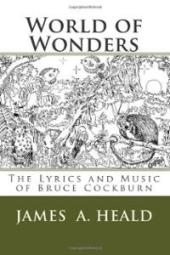
Bruce started out solo in 1968, embarking on a path of more introspective, acoustic-based music. Almost without exception, the songs appear to be an attempt to describe actual experiences, thoughts and feelings. Bruce said: I don't make any of this shit up. People think it's imagination, but it's not. I don't have any imagination, I just report.
Bruce tends towards a mystical, rather than a doctrinal vision of Christianity, the songs being less about religion with a capital 'R' and more about being open to the spirit that surrounds us.
You read the Bible in your special ways You're fond of quoting certain things it says - Mouth full of righteousness and wrath from above But when do we hear about forgiveness and love?
Bruce said:
In the 1980s, Bruce departed from his folky and jazz oriented music to more rock and electric music (of course, Bruce is probably not capable of writing a simple three minute pop/rock love song). You will not find many love songs in Bruce's catalog, if they are the most autobiographical, confessional and have an unflinching honesty and lack of sentimentality. Intermixing of seemingly random social commentary in a love song becomes more charateristic in Bruce's songwriting:
Perhaps too many warts for some listeners. Bruce truly sees the darkness, but has the capacity to not let it overwhelm him, as expressed in the lines of "Lovers in a Dangerous Time":
One day you're waiting for the sky to fall
Then you're dazzled by the beauty of it all
Sometimes, we have to
kick at the darkness
till it bleeds daylight.
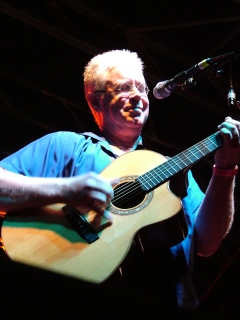
My favourite Bruce Cockburn song had always been "If I had a Rocket Launcher." In the mid-80's Bruce released a trilogy of albums, with his songwriting getting more political.
But Heald's is not only a lyrical exploration, there is also chapter on instrumental music and alternate guitar tunings.
In the end, a deep-drawn sigh escapes Jim Heald's pen:
Well, Cockburn is a surname that originated in the Scottish Lowlands. In the 17th century there was a merchant who settled in Danzig (Gdańsk) and changed his name to Kabrun. A great-grandson of his was the renowned art collector Jacob Kabrun.
I let my mind wander. We are concerned with music collecting here and in the Highlands and Islands of Scotland itself. Our Ancient National Airs, published in the Ashgate series of 19th century Britain music, is principally addressing musicologists and history scholars, but might be of interest for anyone with a deep interest in Celtic music.
The work's title is drawn from the title page of James Johnson's "Scots Musical Museum." Karen McAulay has researched all activities relating to song-collecting and its publication in Scotland during the period of 1760 to 1888.
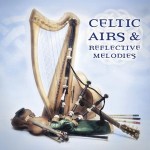 From the Greentrax back-catalogue [46],
Celtic Airs and Reflective Melodies is an excellent compilation
to sooth the mind and relax the body.
The music is from Scotland. First exception is the traditional Asturian air "Anton of Nenu".
Secondly, apart from Carolan's "Lord Galloway's Lamentation" (performed by Ceolbeg [51]),
Nathaniel Gow's "Mrs Hamilton Of Pitcaithland" (Hamish Moore [16]) and
"Ye Banks And Braes" (Tony McManus [43])
the tunes are recent compositions by the likes of Shetland fiddler Willie Hunter [2],
Gordon Gunn [17]
and Ian Hardie [50],
harpist Wendy Stewart [40],
piper Lorne MacDougall [44],
etc. Featured performers are groups such as
Fiddlers’ Bid [40],
The Cast [34] and
The Whistlebinkies [9].
From the Greentrax back-catalogue [46],
Celtic Airs and Reflective Melodies is an excellent compilation
to sooth the mind and relax the body.
The music is from Scotland. First exception is the traditional Asturian air "Anton of Nenu".
Secondly, apart from Carolan's "Lord Galloway's Lamentation" (performed by Ceolbeg [51]),
Nathaniel Gow's "Mrs Hamilton Of Pitcaithland" (Hamish Moore [16]) and
"Ye Banks And Braes" (Tony McManus [43])
the tunes are recent compositions by the likes of Shetland fiddler Willie Hunter [2],
Gordon Gunn [17]
and Ian Hardie [50],
harpist Wendy Stewart [40],
piper Lorne MacDougall [44],
etc. Featured performers are groups such as
Fiddlers’ Bid [40],
The Cast [34] and
The Whistlebinkies [9].
Various Artists, Celtic Airs & Reflective Melodies
Greentrax, 2013 (CD).
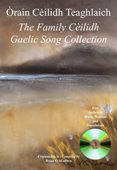 Brian Ó hEadhra is a singer based in the Scottish Highlands
[27][38][45]
and Òrain Cèilidh Teaghlaich his particular collection of Gaelic songs,
said to be the best-loved songs in the singing tradition.
There is not everything that popular as the love song "Fear a Bhàta."
I know recordings from songs such as
"Nach Truagh Leat Mi s Tu n Èirinn" (Joy Dunlop [43] and
Christine Primrose [20]),
"Tha Mi Sgìth" (Margaret Stewart [36])
and even "Fear an Dùin Mhòir" (by German band Zinnober [32]).
But more than half of the tracks I haven't encountered before,
which doesn't mean that these are not sang at every corner in the Highlands.
On the whole, there are love songs, laments, waulking songs and mouth music pieces.
First the Gaelic songtexts, then translations into English, staff notation and brief background notes.
A CD with all 23 songs is included, Brian Ó hEadhra is joined by his wife Fiona Mackenzie
[49]
and their two children Órla & Róise.
Brian Ó hEadhra is a singer based in the Scottish Highlands
[27][38][45]
and Òrain Cèilidh Teaghlaich his particular collection of Gaelic songs,
said to be the best-loved songs in the singing tradition.
There is not everything that popular as the love song "Fear a Bhàta."
I know recordings from songs such as
"Nach Truagh Leat Mi s Tu n Èirinn" (Joy Dunlop [43] and
Christine Primrose [20]),
"Tha Mi Sgìth" (Margaret Stewart [36])
and even "Fear an Dùin Mhòir" (by German band Zinnober [32]).
But more than half of the tracks I haven't encountered before,
which doesn't mean that these are not sang at every corner in the Highlands.
On the whole, there are love songs, laments, waulking songs and mouth music pieces.
First the Gaelic songtexts, then translations into English, staff notation and brief background notes.
A CD with all 23 songs is included, Brian Ó hEadhra is joined by his wife Fiona Mackenzie
[49]
and their two children Órla & Róise.
Brian Ó hEadhra, Òrain Cèilidh Teaghlaich - The Family Cèilidh Gaelic Song Collection.
Anam Communications,
2013, ISBN 978-0-9574982-0-4, pp90, UK£10 (incl. CD).
It is a chronological approach, commencing with the influence of Macpherson's "Ossian" upon the educated and intellectual. James Macperson toured the Outer Hebrides in 1760 in search of ancient bardic verse. He published his controversial text in 1765, allegedly translated reconstructions of ancient poems, but rather he had embroidered together genuine snippets into a new product.
In the 1770s, William Tytler had been one of the earliest Scottish song collectors who actually did field work: The old Scottish songs have always been admired for the wild pathetic sweetness which distinguishes them from the music of every other country.
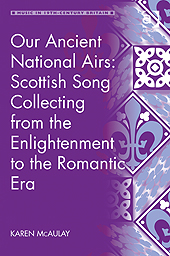
McAulay distinguishes and discusses different eras of song collecting and different attitudes. The late 18th century song collections are characterized by
James Johnson's "Scots Musical Museum" (1787-1803), with which Robert Burns[38] was associated, was the most ambitious and perhaps over-ambitious undertaking - the first affordable, pocket-sized collection of EVERY Scots song extant. The texts might have been based on old songs, however many of the words had been modified and improved:
In the early 19th century, the antiquarian passion for collecting songs and tunes was to be joined, and partly replaced, by the fashion for popular versions of these for domestic purposes. Many collections were just a product designed for domestic consumption among those sufficiently well-placed to possess both a drawing-room and a pianoforte.
James Hogg, the Ettrick Shepherd, most famed for his "Jacobite Relics" (1819-1821), was collecting traditional ballads and making his own. There has been much debate about the authenticity for many of his songs, and McAulay discusses the question of invention and fakery.
The mid 19th century saw a diminished interest in actively collecting songs, but an increasing intellectualization and commercialization of the genre. Middle-class Victorian art-music compilations were exploiting collections others had already made and a Romantic image of the Scottish Highlands was promoted. However, in the latter part of the 19th century, William Chappell also questioned the authenticity and suggested that certain Scottish tunes were not originally (perhaps even not remotely) Scottish.
We are now at the dawn of the modern era. I have no clue what you are doing now, I'm reaching out for the CD pile ...


Photo Credits:
(1ff) Book Covers, (11) Marianne Faithfull,
(12) Bruce Cockburn,
(13) Jim Heald
(from website/author/publishers).